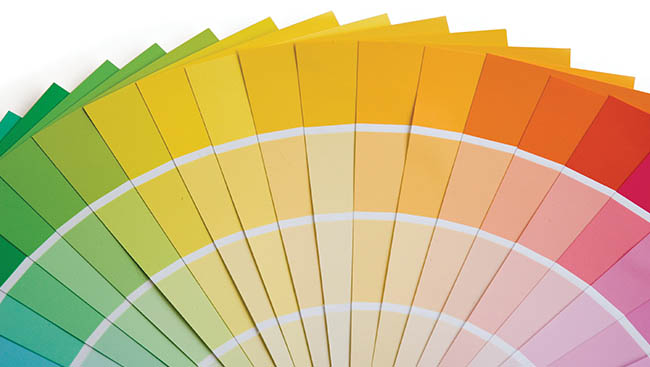Choosing a colour that works well for your walls
Painting can be a labour-intensive task for even the most experienced. But what may be even more daunting is the endless wall of paint chips at your local home reno store; the rainbow of colours in every shade and saturation can be overwhelming for a decisive DIY’er or professional designer. Picking the right paint colour for your home doesn’t have to be the hardest part of home decorating; a little time, a lot of thought, and some planning ahead can have you loving the walls between which you live.
Inspiration is essential and the first important step to selecting the perfect paint. By documenting the homes, artwork and experiences that inspire you, a common colour, shade or mood may appear.
Choose your colour based on a room’s intention and not necessarily on your likes and dislikes. The mood you wish to achieve will lead towards your desired colour palette. Bright colours may bring you joy in other aspects of your life but if you’re hoping for a home that’s restful and relaxing, softer, cool colours may be better suited for your space.
Settling on several paint chips may feel like a win but how the hues look in a store may drastically differ from how they stand out in your own space.

“Some paint manufacturers have little paint pods you can buy so you can put samples on your wall of the actual colour,” says owner of Benchmark Painting, Brent Klemke. Investing a few dollars in several samples and painting a board in each colour will help ensure the colour you’re looking for is the colour you actually get.
Take your time comparing how the colours look at different times of the day, next to windows, with your lights on and off, and when you’d spend the most time in that room.
“If you hire a painting company and choose the wrong colour or the lighting in your home doesn’t work with it, it’s expensive for us to buy paint all over again or to re-do what we’ve already done if you’re not happy with the colour,” explains Klemke. The same can be said when doing it yourself; the money and effort to re-paint makes it important that you get the colour right in the first go itself before you break out your brushes.
“You can put beiges on the wall and in certain light, it’s going to look purple,” says Klemke. “A designer knows what the undertones are that made that beige and they’ll tell the client, maybe this isn’t the right colour because it’s going to look like mauve on your wall as opposed to brown.” Klemke suggests hiring a designer whose experience and knowledge will allow you to pick a colour that truly works within your home.

The paint you choose isn’t only about where you apply it, so consider what else sits in your space. If you have a fireplace, window or seating area you hope to highlight, contemplate how the wall colour will complement your area of focus. Bright wall colours may compete too strongly with your collection of ceramics or perfectly-curated curtains.
Unless a complete home makeover is in your budget, don’t forget about flooring when picking your palette. Your choice should not only work well with the colour of your carpet, hardwood or tile but it may also change based on how it is reflected on the flooring.
You may think you’ve settled on white walls but will it be Cloud White, with a touch of yellow and black? Or Decorator’s White, a classic with slightly blue-green undertones? Again, compare your choices against other elements in the room to ensure your choosing the right white. This may greatly depend on your lighting, sun exposure, floors, and furnishings – most of which are more expensive to replace than the paint.
Instead of trying to find fabrics that match or mix well with your wall colour, which could limit your options, start with a pattern or print that will exist in your space and select your paint colour accordingly.

Consider how any colour choice may work with the rest of your home. A carefully-curated transition of colour may reduce your options but will lead to a more cohesive, aesthetically-pleasing and larger-looking space. Take a walk into adjoining rooms to see what slices of colour may be visible and consider how the room colours will interact with each other.
Choosing a colour palette for your home is a personal decision, but one that you may be reminded of everyday. Avoid any regret by investing as much time and thought as it takes to settle on a hue you love. There is no perfect paint colour, there is only the perfect paint colour for your room, your tastes and your mood, and, most importantly, it will be the one you’re most pleased to live with.

